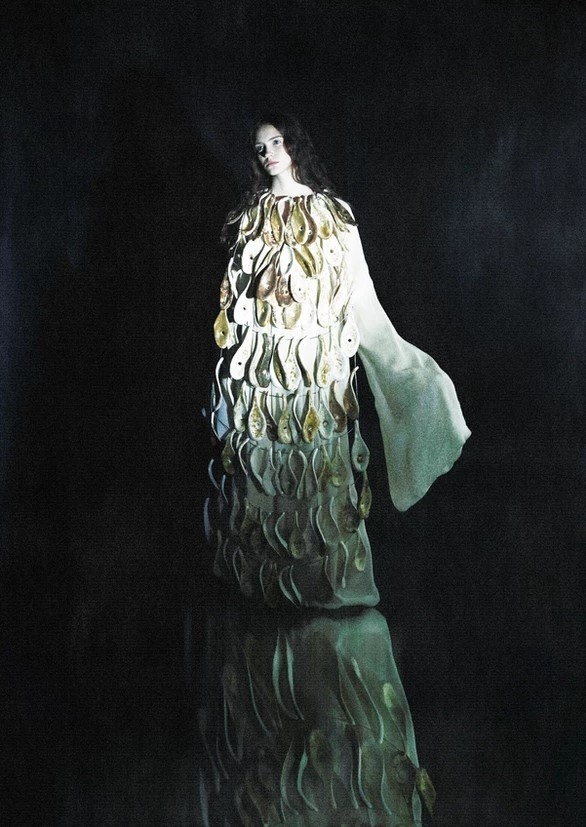My great-grandmother had nine children, three of whom passed away at a young age. Her husband was a violent alcoholic. During the war, retreating Germans burned down their farmhouse in Setomaa, Kossolka village. There was nothing left but a few apple trees growing in the garden.
Father was locked up for two years for making moonshine for his brother’s baptism. With the imprisonment of father, the family lost their main source of income and mother was only paid wages once a year. To keep her six children alive, she had to exchange and sell all of her hõpõkraam – a set of silver coins worn as jewelry and considered to be the source of a Seto woman’s pride, protection and strength. One by one, she had to give away pieces of her protection in order to safeguard and feed the six children she had. Eventually there was nothing physical left behind when she passed away – no objects, photos, nor letters.
Since my great-grandmother had nine children, there are nine rows of ceramic spoons. The spoons symbolise the missed meals. The porcelain hõpõkraam symbolises the burden of worry physically, weighing around twenty kilograms. All 138 spoons have been glazed with apple tree ashes and Sänna clay. Sänna is a nearby place in Võru County, Southern Estonia.
The dress is inspired by the shirts of Seto women, with the older ones reflected at the bottom and newer ones in the top layers. The lower part of the dress was dyed with apple tree bark and the top was left undyed, letting the golden hue shine through the shell.
The branch of an apple tree from an old orchard which hangs from the ceiling and places all the visitors literally underneath an apple tree.
I have been moved by Estonian folk stories about a young orphan girl who loses her mother at a young age and finds a refuge under a blossoming apple tree to share the worries of her difficult destiny. The apple tree drops its blossoms to comfort her while she sheds her tears.
Similarly, my grandmother was still relatively young when her mother died. Finished with natural and fragile porcelain white, these spoons are like blossoms, shaped like brooches and tears at the same time. The apple tree is a symbol of love and motherhood. Likewise, the traditional brooch signifies motherly love and fertility.
‘Underneath the Apple Tree. An Homage to Care’ gives body and form to memories without a physical trace, bringing attention to what truly and always matters – the humane ability to listen, care and understand.
Karl Joonas Alamaa (b. 2000) is an artist and designer with tailoring background studying fashion design at the Estonian Academy of Arts and currently completing his studies in the field of costume design at the Royal Academy of Arts in Antwerp.
In addition to researching the past, Alamaa’s work includes dissecting and challenging social and societal constructions, including the relationships between gender, fashion and the body. Alamaa is a 2021 nominee to the Silver Needle award.
Music: Henryk Gorecki, Symphony No. 3 ‘Symphony of Sorrowful Songs’, movement II; performed by: Estonian National Symphony Orchestra, soprano Mhairi Lawson, conductor Andres Mustonen
Graphic design: Eliisabet Kuslap
Photo: Kristina Kuzemko




